A tribe called VEED: How our bootstrapped startup became the global scale-up to join in 2022
In the summer of 2019, I left behind nearly a decade of public service and political work to start a new career in tech. I had seen how every year, innovation changed how we moved and traveled; how industry thrived or choked; how we came to define human rights, justice, freedom, & each other — and I wanted to be at the heart of it.
About a year ago, I landed my first job as a software engineer at VEED.IO, a then small, bootstrapped startup built around an easy-to-use, collaborative video-editing platform. I started during the pandemic as VEED’s ninth full time software engineer; a year later, we employ over 40 developers around the world, and about 130 staff across product, design and growth. At a time of tightening social circles and isolation burnout, working at VEED has helped me feel more connected than I could have ever imagined.
So how did we get here? What were the values that helped VEED build not just a product but a community with shared values and ideals?
Code’s Not a Competition (Which is Why We’re Winning)
From the very first email exchange I shared with our CTO Tim while interviewing, he made it clear: “we have a no-blame culture, instead encouraging enthusiasm and making mistakes.”
In the beginning, we were still a small company — there wasn’t always someone around every time I needed help, and I certainly did make mistakes. However, my teammates made the time to not just support, but really get to know me.
Take Stan, a developer from Brazil and one of my first friends at VEED. We spent an afternoon on google street clicking down the roads of our youth: past the house he grew up in with his family; where he lived currently with his wife Bella. With a wink, he showed me an overpass he knew was used as a lookout for local “herbal entrepreneurs.” And at home in Queens New York, we modeled the warpath he tore playing Grand Theft Auto, lingering at the Unisphere, the symbolic heart and geographic crossroads of the borough.
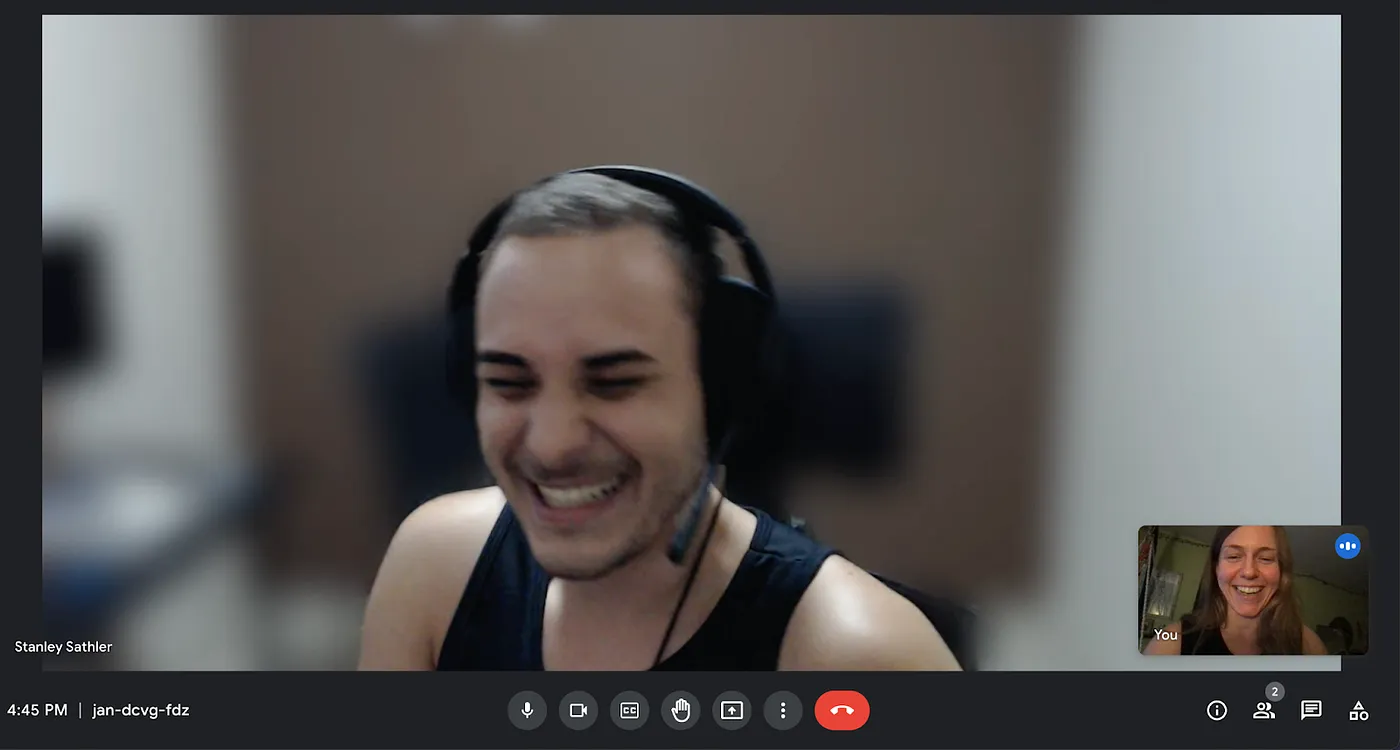
In those days we pair-programmed often; I needed help with testing when coverage for my first major project fell woefully short, and he jumped in to help. The tests weren’t simple — they involved mocking calls to create and use media streams in a screen recorder app that shared tightly coupled logic across components — but we plowed through, inching from error to error until we saw green.
This built trust. As the months progressed, our conversations turned to deeper topics, asking and discovering: How do you want to progress? What kind of engineering are you most interested in? What roles are even out there, and what do they look like? Really, what we were asking was “What do you want to accomplish, and how can I help you do that?”
We would do research, or use opportunities with more senior engineers (🎩 tips to Rasmus, Máté, Sjaak and Steve) to better understand what each roadmap looked like before our next catchup. Things like: what makes a team lead different than an engineering manager? What kind of work falls under devops? What’s a staff/principal/platform engineer anyway?
This attitude of support and shared success was something I struggled to find working in politics, where elections (and their ensuing fallout) were generally a zero-sum game. Even within your tightest circles, the dial is set not to collaborate but compete.
In tech, I expected the same if not worse, so I was unexpectedly charmed when Josy, a self-taught engineer and one of Veed’s team leaders, took me through the technical portion of my final interview, gently coaching me towards not just the right answer but the right approach.
On hire, it was just the two of us, but in time, our team grew to include more female devs. Sandy started in March out of Toronto, another junior engineer with a few months of experience on me. What could have been a cliched rivalry between two similarly stacked women vying for promotions or the attention of senior engineers instead became a deep friendship where we regularly collaborated on projects, planned events, and asked each other that same question: What do you want to accomplish, and how can I help you do that?
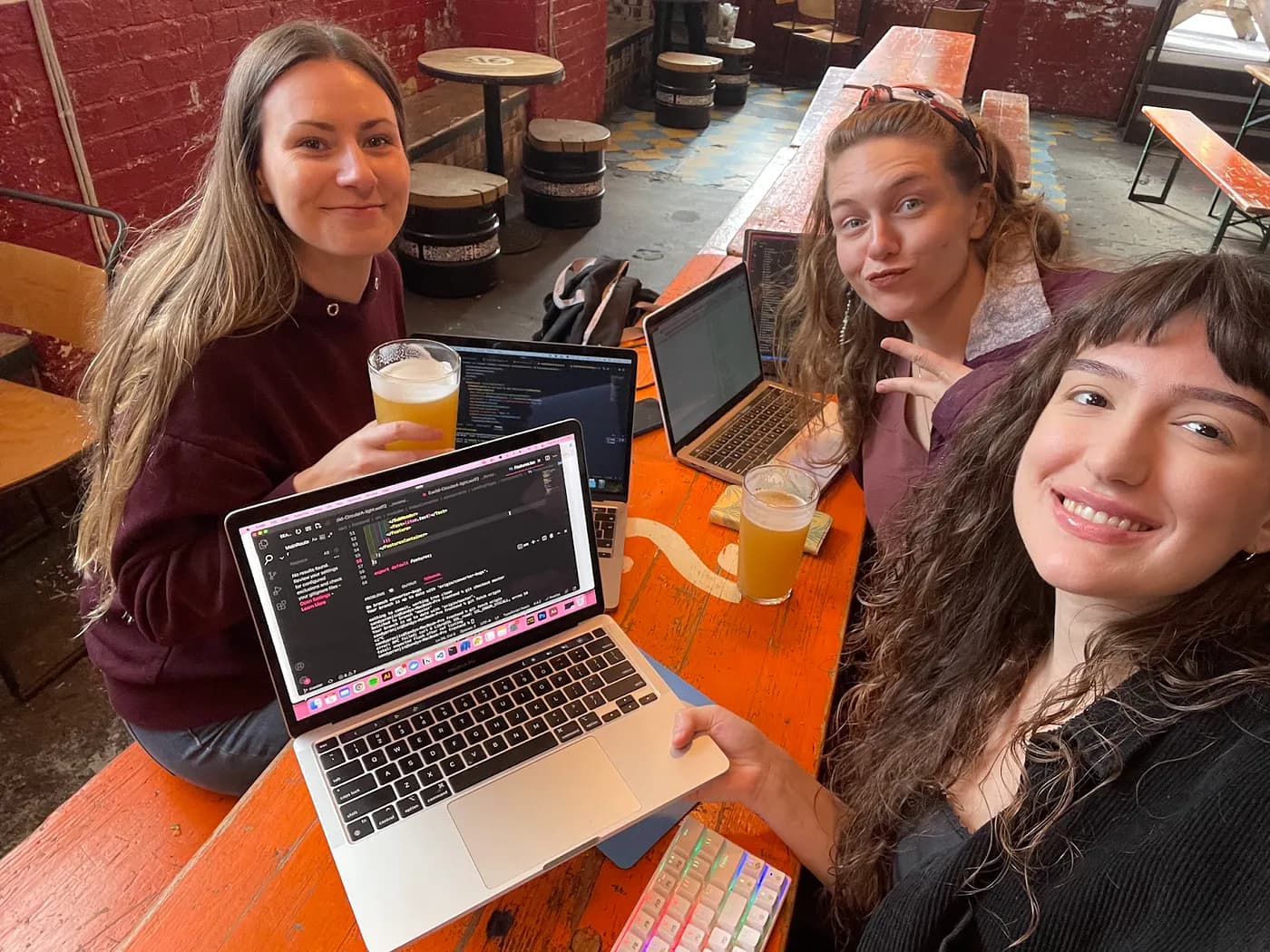
Greater together than the sum of our parts
At VEED, we make it a point to look beyond the sum of a person’s product or the output of their specific role. We ask ourselves: how can this person contribute — not just to what we need to grow our bottom line, but our community as a whole?
There’s a lot of anecdotal evidence to this, stories about the ways we’ve brought on engineers who don’t fit the typical brogrammer archetype. There’s Saf from Tunisia, the dev and yoga teacher who reminds all of us to “breeeeeaaaaathe” when we’re coding together on a deadline. Josy, mentioned above, left a career in pharmacy to code the tropics in search of the next great dive. 🤿 Sjaak, one of our senior architects, moved to Vietnam and is living out his dream of opening a bar. All of them (and so many others) contribute to the story Veed has to tell about what kind of company we are and will continue to grow into.
Sandy and I discussed team curation at one point with our CTO Tim, together weighing technical knowledge, interpersonal skills, creativity, and ambition. He described composing teams with different kinds of devs: some more creative, more technical, more social.
When you’re a woman entering a highly technical, male dominated industry, the last thing you want to be described as is a “social dev.” I wanted to be the dev’s dev, the technical dev, the one who studied C++ for years and debugged webpack configs for kicks and had a ‘devops’ or ‘staff’ or ‘architect’ as part of their title, because that’s how I thought you got ahead in this industry.
Of course, “social” was what he went on to describe me as (Sandy was “creative”). He wasn’t wrong — I could hold a conversation with to a door knob if you asked me to — but despite how much we’re told to market our transferable skills during any career transition, I was still worried about being seen through the lens of my “softer” skills. As a lifelong engineer (and our freaking CTO), that was the bucket I expected Tim to lump himself into when I asked him how he categorized himself — and then he surprised me. “Oh, I’m definitely a social dev.”
His answer helped me internalize two things: 1. I didn’t need to be the “technical” dev to be the most important engineer in the room and 2. that the team VEED was building would be greater together than the sum of its individual parts. A team full of “technical” devs wasn’t going to necessarily make a good product if they couldn’t work together, or think outside the box.
A small sports anecdote to illustrate: in the early 2010s, Barcelona was one of the industry’s most successful football teams, with some of the best players in the world, a strong legacy, and (to many) immense popular appeal. The reasons for their decline in the years to come range (poor financial management, transitioning leadership and divestment from its talent pipeline), but one thing that stands out was the oversaturation of big name signings in the mid 2010s. The team, whose strategy was already built around Lionel Messi, then brought on two other big names: Neymar da Silva Santos Junior and Luis Suarez. Tactically, each of those players were enough to build a winning formula around; together, they destabilized strategy and collective cohesion, and contributed to Barcelona’s overall decline.
Just like football, engineering is a team sport, one that requires mindful composition to combine strengths and offset weaknesses to keep players (and devs) motivated and performing well.
Carving a Slice of that (Product) Pie
When I started, I was the sole engineer working on our Screen and Webcam Recorder. As breakout roles go, it was a lot of responsibility, and I had to work largely independently through a complex, yet-to-be-optimized technical ecosystem. We were still small, with a limited budget for hiring more experienced devs to take the lead on all our features.
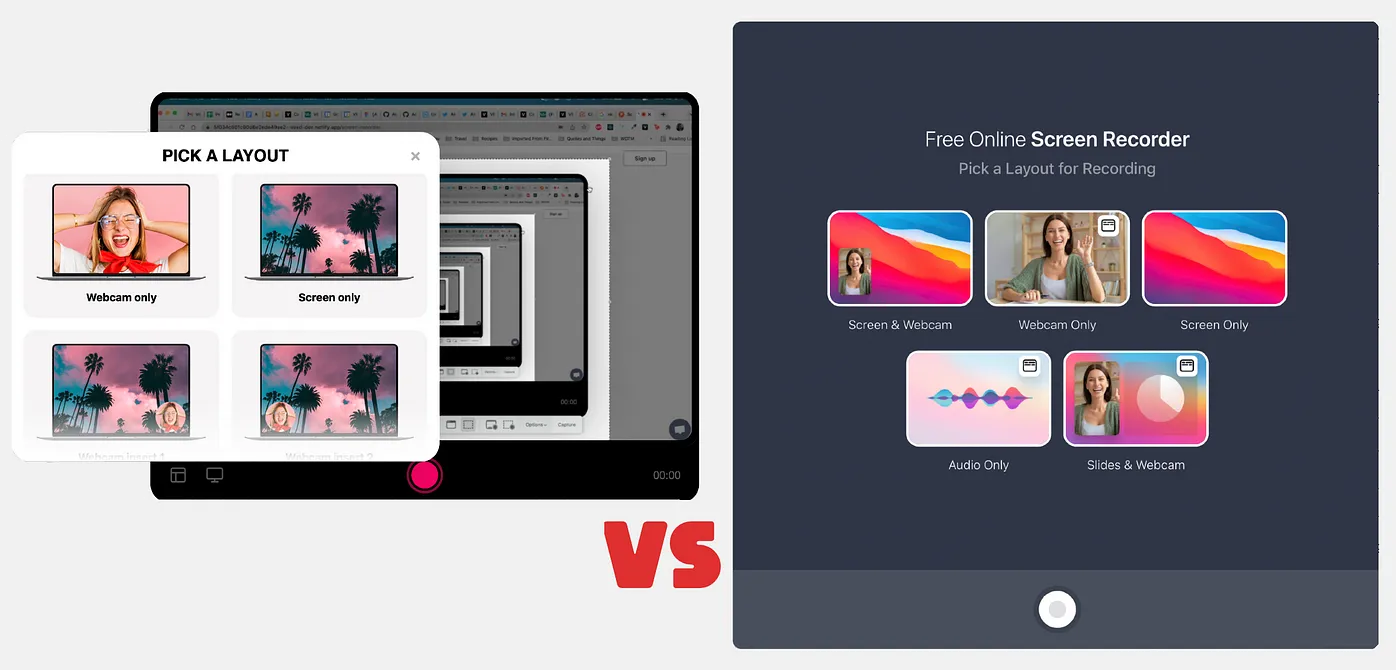
A month and a half in, I finished a full-scale redesign of the recorder. Using what I’d learned about the Canvas and Media Stream APIs, I then created an audio visualizer layout for users to record podcasts. Six months in I completed my first solo feature: a teleprompter with customizable scroll speeds and text sizes (harder than it sounds), with end-to-end testing for its complete lifecycle (hi Stan!). Towards the end of that summer, I collaborated with then-dev (and later PM) Stefo on a two-person, one week hackathon allowing users to record slide presentations in tandem with their webcam. I rounded out the year with the newly formed Tools Team’s first official video hosting feature, an intuitive uploader built using Next.js for users to share videos with friends.
It was diverse, thoughtful hiring, collaborative decision-making and strong individual ownership that helped us build great products — and those great products gave users a reason to buy in. Only recently did we bring on our first outside backer (check our $35 million investment announcement from Sequoia Capital) — otherwise, our salaries were bootstrapped, paid for by everyday people who saw value in our work.
But while that growing usership meant more money for hiring, it also led to higher demands. We needed experienced engineers yesterday — but without compromising company culture for technical talent. We needed to think outside the box about how we would attract engineers who were not only experienced, but in line with the values that created such a healthy social ecosystem in the first place.
So: how does a promising but still early-stage startup on an (albeit growing) budget support diverse hiring?
The short answer is that we’re still figuring it out. We’ve explored the typical avenues like job boards and on boarding multiple talent acquisition specialists. We’ve added a generous referral bonus for leveraging existing networks to bring on new engineers. But we’re also thinking about out of the box ways to attract candidates that gel with our vibe by showcasing all the ways we’ve built our team into a community.
In June of last year, Sandy and I ended up on an unplanned call with our CEO Sabba and Katy, our head of HR. Fortune seemed to be knocking: the two of us had been discussing visiting London for a month to work in person with the team over there, and it seemed as good a time as any to bring it up. What started as a casual inquiry into laptop satisfaction turned into an impromptu pitch, and by the end of the conversation, Sabba had offered to host a month-long airbnb open house for employees visiting from around the world.
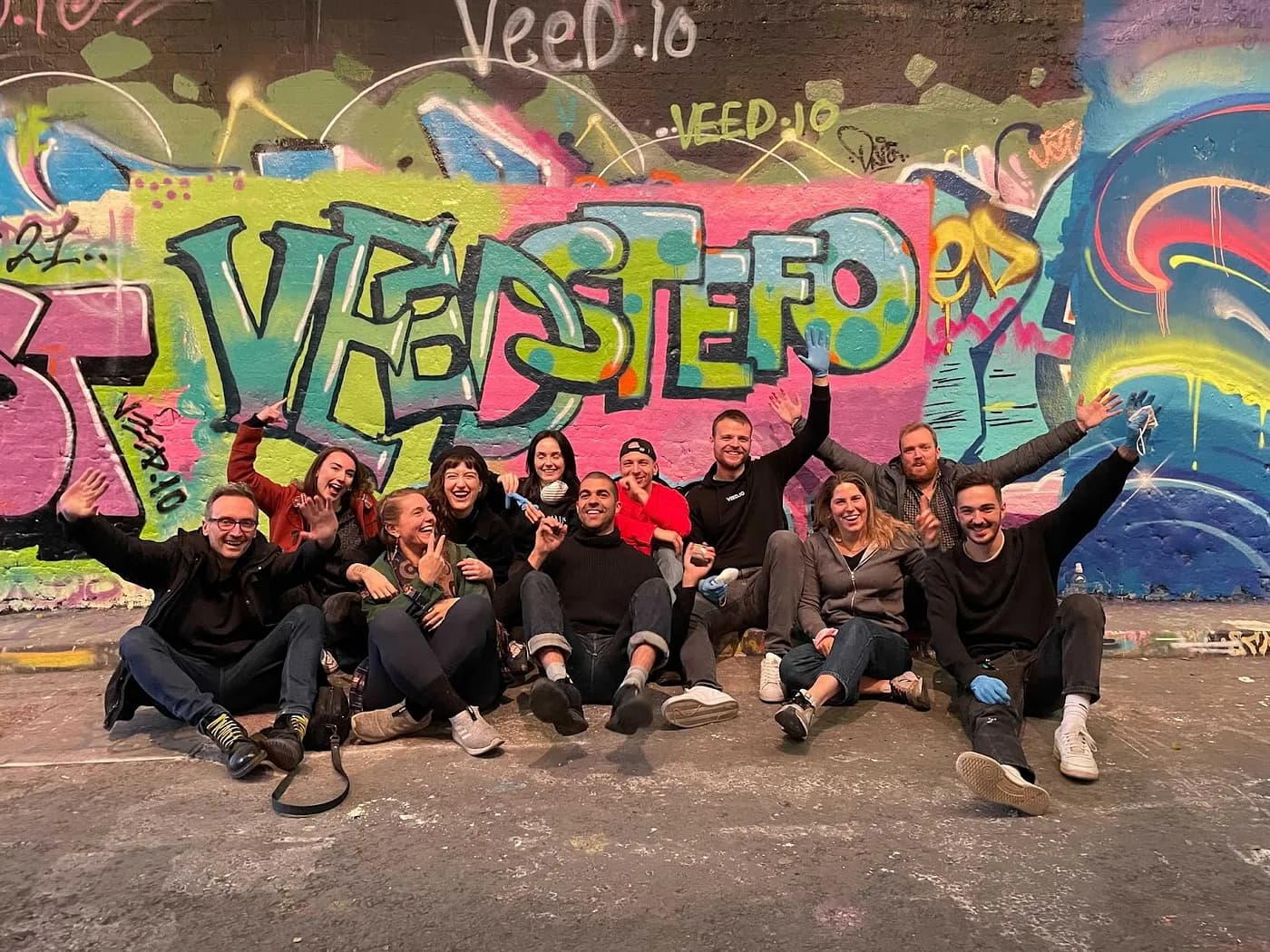
Supporting the Open House wasn’t just money spent building a better product, but a choice to invest in us beyond our job titles — as people who loved exploring, traveling, learning about the surrounding world. In London, we worked hard, often into the late evenings, but we played hard too. We took a street art class, learned how to scratch a record with a professional DJ, and experienced some “striking” tenpin bowling skills (cue groan).
The takeaway from this (and often working at VEED in general) is that who you are as a person comes first. You may be paid to build a product, but at the end of the day, we want who you are as a whole. And with that in mind, we’re willing to think a little more broadly about how we give back to you — not just by depositing currency in your bank account, but by helping you be a wealthier citizen of the world.
Psychological Safety and Emotional Fearlessness
This isn’t to say we don’t trip up. We’re still a pretty young company, developing processes and learning what works. This occasionally includes who we hire, how we manage people, and what we communicate. Sometimes it’s learning how to tell your team that someone will no longer be working with the company. Or deciding how to brainstorm tough questions, like why code isn’t being shipped faster. Sometimes it’s making and sticking to workflow pipelines, keeping the direction of product development consistent from dev all the way to CEO.
Just as we celebrate success, how do we frame moments of misstep? How do we tackle them boldly and with fearlessness, with everyone empowered to participate?
After almost ten months at VEED, we were finally big enough to create a dedicated team to expand on tools like the screen recorder. Stefo (who I mentioned earlier) would be our Product Manager — at 22 he’d just become VEED’s youngest PM. Bojan, an experienced new engineer, would join us, as well as a designer, Richard. We were on our way to becoming the best team at VEED! 😂 🎉✨
Despite now officially having a “team,” we all had a lot on our plate: with only two engineers, the Tools Team was both implementing a complete overhaul to the recorder’s overall architecture, as well as developing a feature to get video hosting off the ground. Given our limited bandwidth and pressure to ship quickly, the decision was made for Bojan and I to work independently — Bojan, with more experience overall and a fresh pair of eyes, would refactor the Recorder, and I would see our upload process through for Video Hosting.
Both projects were completed by the end of the year, but the siloed structure of our workflow took a toll. Bojan and I had little context for what the other had been doing, and we missed an early opportunity to get to know each other and collaborate. Further, after nine months of solo work on the recorder, there was a lot I could have learned by working with Bojan. I felt burned out, vulnerable, and to some extent excluded from a product I had invested a lot of energy into.
The important part was what came after though. When I summarized this to Stefo, he sprung into action, confronting my feedback head on and inquiring more. He never doubted my reasons for feeling the way I did, became defensive, or made excuses. He acknowledged we were all learning — including him — and together, we put a plan in place to improve collaboration, including working directly with Bojan to onboard me into the new recorder architecture and syncing more regularly as a team.
On my end, this dynamic was able to play out the way it did for a few reasons:
-
I was a stakeholder in the future of the company, and as such was able to feel confident in articulating the role I wanted to play.
-
A strong bond of trust had been gradually established over time through collaboration, friendship, and VEED’s overall approach to work, described previously.
-
That trust made it easier to assume best intentions — whatever it was that I felt, it wasn’t caused by purposeful exclusion or ill feelings, but limited resources, inexperience and (at worst) perhaps some level of thoughtlessness.
-
Trust also made it easier to feel safe psychologically to work around any imposter syndrome and occasional feelings of unworthiness. In previous conversations providing feedback or asking questions (technical and cultural), I was taken seriously, so experience dictated that was the likeliest outcome.
-
Being valued for both my technical and emotional intelligence meant I could conceptualize this was an opportunity not just for Stefo to help me, but also for me to help Stefo. We were both in the process of starting something new, and while he could help me become a better developer, I could also help him become a better PM.
As for Stefo, I give him lots of credit. It is not every 22 year old that can take every challenge as a learning opportunity, but Stefo ran with it. The Tools Team entered the New Year hitting the ground running, improving processes, growing to trust, building new features, and codifying communication.
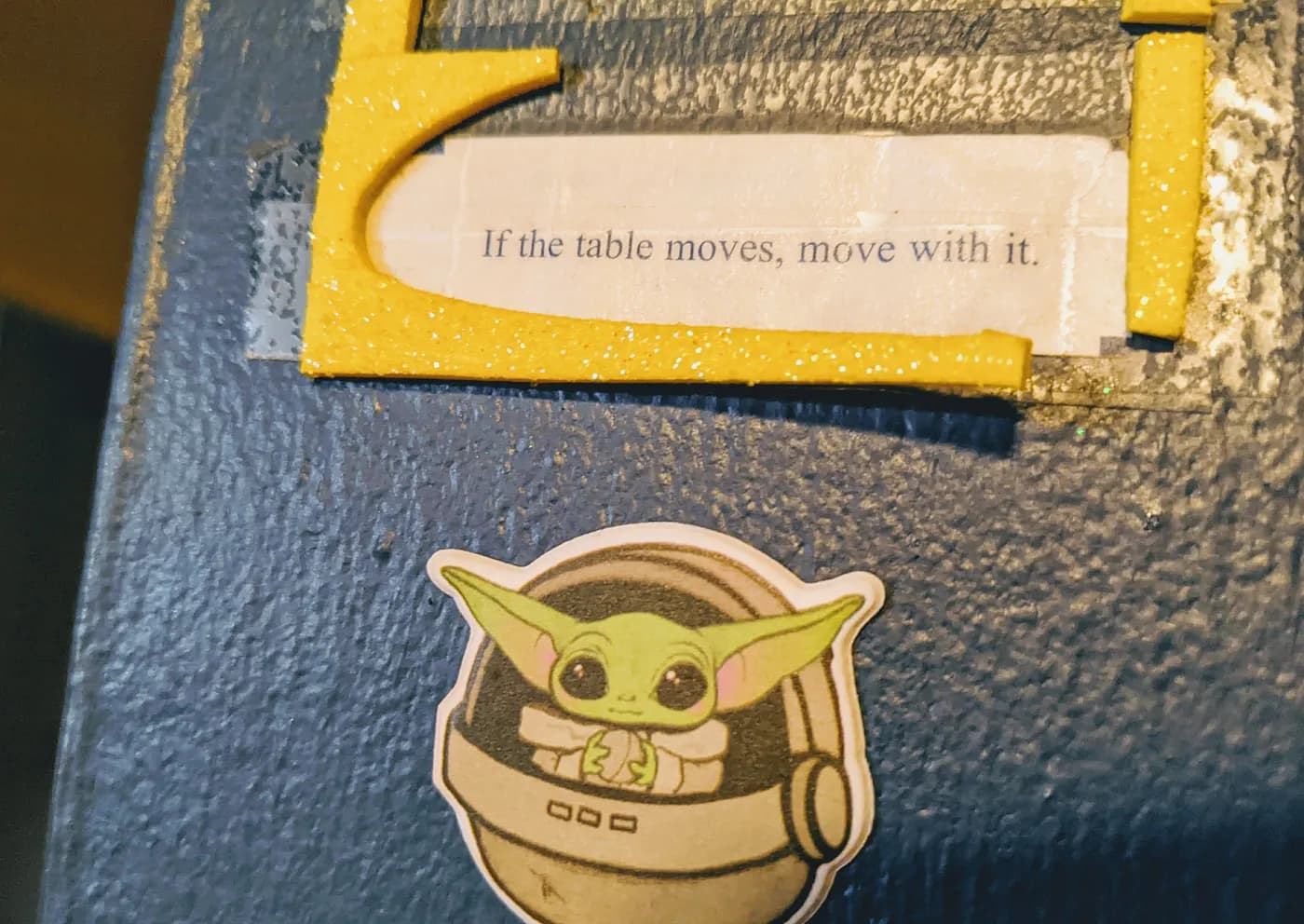
I have a fortune taped to the wall of my dining room: “When the table moves, move with it.” It recently came to mind — I was practicing yoga outdoors, and while the weather had been warm, I was being hit by winds gusting 15 to 20 miles per hour. I was powerless to stop the wind — but what space was there to adapt, to bend, to dance in symphony amid syncopation?
I think of Sabba and Tim’s story of turning failures into success — as students of their missteps, integrating feedback and leveling up. It’s that attitude that reinforces adaptability and openness to new ideas, just another curve in the road of the greater journey.
A Tribe Called VEED
As this rounds out, I’m heading back to New York, flying home from a quick stint in Florida. Four of us — Sandy, Stefo, Diana (our Head of Content, living in Fort Lauderdale) and I had planned to meet there Saturday evening, but on Friday at 5 PM, I found out my Saturday morning flight had been canceled. In a whirlwind I snagged a last minute flight for later that evening. Diana welcomed me into her home at 1 A.M. that night, and we stayed up talking like middle school kids until crashing around 3:30. Sandy flew in from Toronto the next day and we met Stefo for dinner off a 10 hour flight from Belgrade. The next day, Sandy and I headed to the Keys, and spent four days camping on the beach before flying back together to New York to ride out the winter.
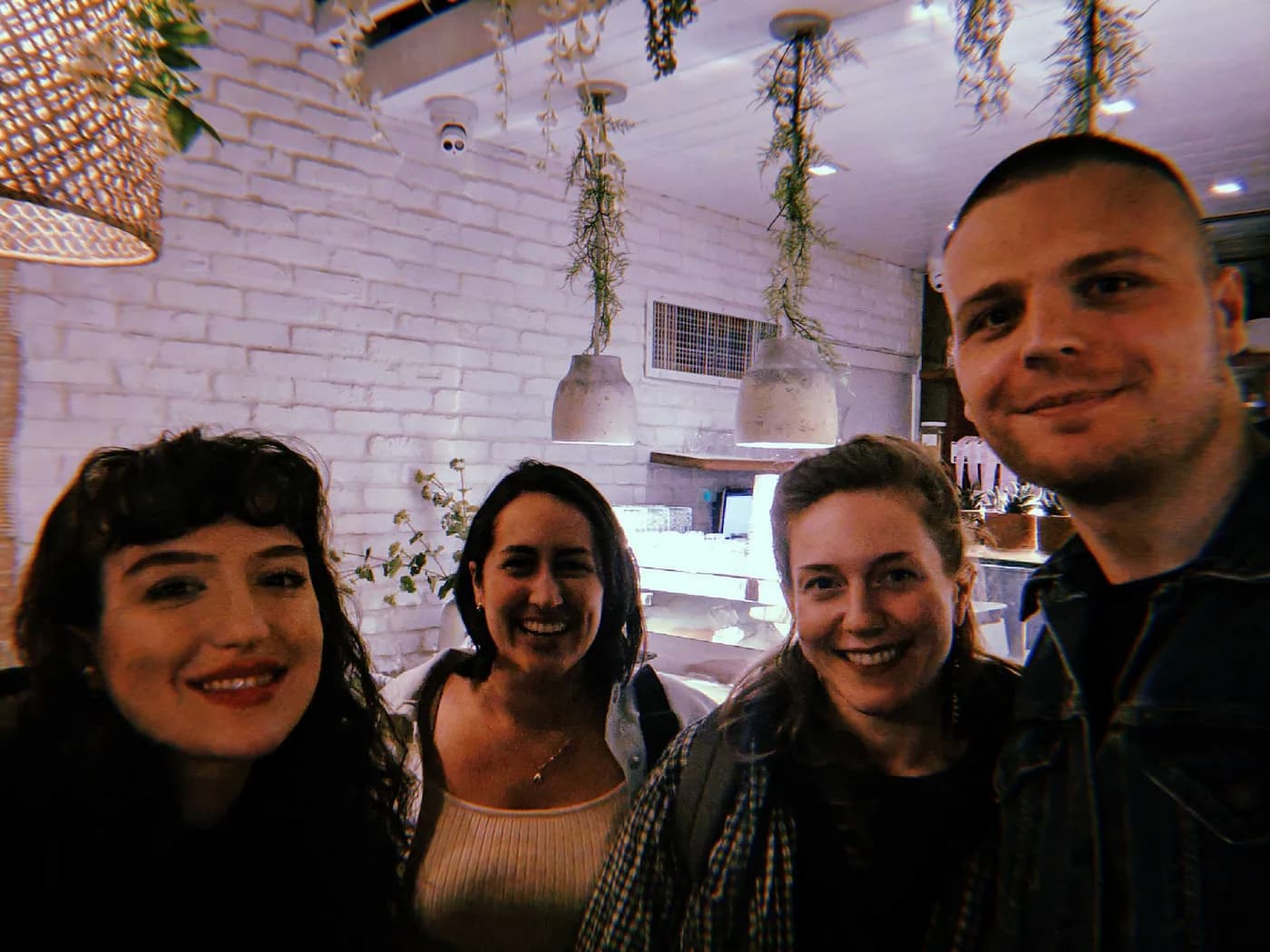
Since starting at VEED in January 2021, I’ve written code in seven different countries: from the surfer haven of Mexico’s Puerto Escondido to the pebble beaches of Croatia’s Dalmatian coast. I’ve scoped the cafes and breweries of London, witnessed the mingling of Berlin’s parks with its history. I took in Barcelona, with its appetite for flavor and movement and sound, and marveled in the lights of Paris. I left satisfied but hungry for home, so — here I was, back in the World’s Borough: Queens, NY.
Government had been an implausibly small world that had kept me local, even while working on the national scale — but a year into work in the tech sector, I was struck by just how big my world had become. Arev, one of our product managers, is planning on coming to New York in May. Living in London by way of Armenia, her family hailed from a disputed territory under the sovereignty of Azerbaijan called Nagorno-Karabakh. Our first conversation happened less than a year after the area had been seized by Azerbaijan in one of the region’s bloodiest moments of violence since the fall of the Soviet Union. Loved ones had been lost. I remember what an impact talking to her about it had on me, breaking bread across oceans. She had invited me to share in her table, to see a part of her life that was deeply personal. I thought about how lucky I was to know her — someone whose story was so different from mine, and through Veed, our paths converged.
I’ve been thinking about how to sum up our founders, Sabba and Tim. They’re both quite distinct: Sabba’s full of hype; he loves games, competition, working a room. Tim tends to be more emotive, calm. He’ll observe, ask questions; he made the call to give me a chance, and Sabba gave his blessing. They’re both deeply invested in VEED and its culture; strong willed, although open to having their minds changed. I’ve spoken with both of them about the direction the company is heading in, and we’ve had some tough talks about what it will take to get where we want to be. In the next three months, we hope to hire upwards of ten new developers a month, and could very possibly change our entire culture in the process. The easiest pools to tap into in tech aren’t exactly ripe with diversity, and it would be a challenge for any company to be picky bringing on so many engineers that quickly.
But while our opinions occasionally dissent, when it comes down to it, without Sabba and Tim, we wouldn’t be here. And it’s them I have to thank for all the amazing people in my life right now. If they hadn’t quit their jobs to follow their dream, leaving it all (including their life’s savings) on the field. If they hadn’t gotten our first iteration of the editor off the ground with nothing but ramen on the stove. If they hadn’t used a rejection at Y Combinator to set the stage for our first paid customer, finding ways to turn failures into success. If they hadn’t thought creatively about the products we were building and people we were bringing on board.
Really, I’m grateful. Not just for the job — but for the chance to be part of this tribe called VEED.